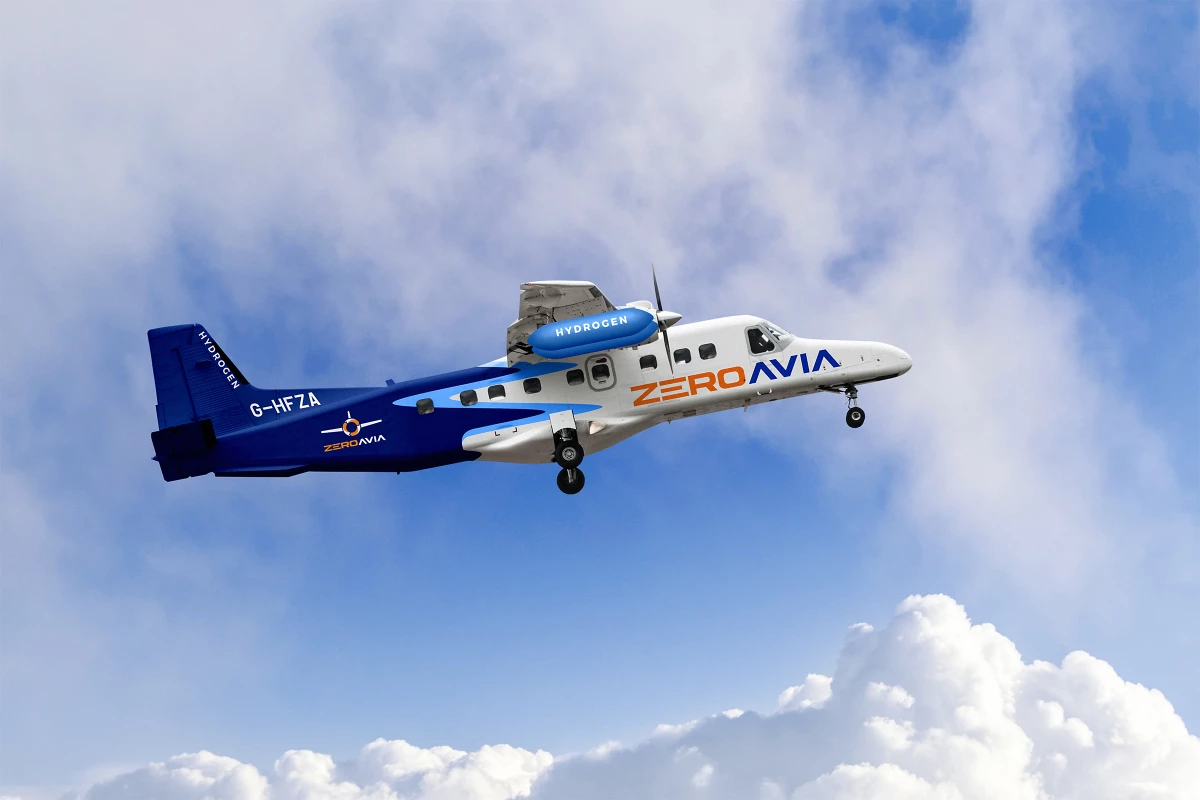Despite an abrupt and unscheduled ending to its six-seater test program, hydrogen aviation pioneer ZeroAvia is ramping up development of the largest fuel-cell-powered aircraft to date – a pair of 19-seaters – and is preparing for something much bigger.
Moving toward zero carbon emissions will prove particularly difficult for some industries. Long-haul aviation has given us global mobility on the back of the enormous energy density offered by fossil fuels. Batteries won't be much use; at around 260 Wh/kg, they trail a long way behind jet fuel at around 12,000 Wh/kg, even when the inefficiencies of combustion engines are taken into account.
Hydrogen, on the other hand, stores around a whopping 33,600 Wh/kg of usable energy, making it one of the most energy-dense fuels by weight and offering genuine potential as an aviation power source, even when the inefficiencies of fuel cell powertrains and the high weight and space penalties for hydrogen storage tanks are taken into account.
ZeroAvia has been pushing the hydrogen aviation barrow for some time now – check out our extensive interview with ZeroAvia Founder and CEO Val Miftakhov from last year – and the company is at the forefront of the field, having completed the world's first fuel-cell-powered flight of a commercial-grade aircraft in September last year. That plane, the HyFlyer I, was a modified Piper M-class six-seater with a 250-kW powertrain, and it made its way back into the news in May when it made an unscheduled landing and subsequent low-speed ground crash in a bumpy field adjacent to Cranfield Airport in the UK.
No official explanation has been given for why the plane had to make an emergency landing at this stage, but thankfully there were no injuries, and there was no fire or explosion from the on-board hydrogen system, which the pilots were able to vent safely on the ground.
While an investigation is underway, the company has moved forward with its next phase of development, the HyFlyer II 19-seater, and now has two aircraft to retrofit with the larger powertrains. ZeroAvia has acquired two 19-seat Dornier 228 aircraft to retrofit with twin 600-kW hydrogen powertrains to become its biggest certification platform to date. With 100 kg (220 lb) of compressed H2 on board, these planes will offer a 500-mile (805-km) range.
One will live in the UK, the other in the USA, to serve both as test and demonstrator aircraft, and also as platforms for certifying these 600-kW powertrains for commercial use – ZeroAvia hopes to have a commercial offering on the market by 2024. The HyFlyer II project is backed by the UK Government.
And 19-seaters are by no means the end point; the company has also announced a further US$13 million in investment towards a larger plane again, capable of seating more than 50 passengers. The total investment in this project to date is now $37 million, with AP Ventures, SGH Capital, Alumni Ventures Group, Amazon's Climate Pledge Fund, Summa Equity, Shell Ventures, Horizons Ventures and other firms now in the mix.
"We are eager and ready," said Miftakhov in a press release, "to begin testing our hydrogen-electric powertrain technology on a larger commercial-size aircraft and grateful to our investors and grant funders for their continued support of our vision for sustainable aviation. Various projections indicate that aviation may account for over 25 percent of human-induced climate effects by 2050. We are on the path to helping reverse that trend, first with our successful six-seater testing and now with the R&D for our 19-seater, and the kick-off of our 50+ seat program. Hydrogen is the only practical solution for true climate-neutral flight, and it will become a commercial reality much sooner than many predict."
Source: ZeroAvia





